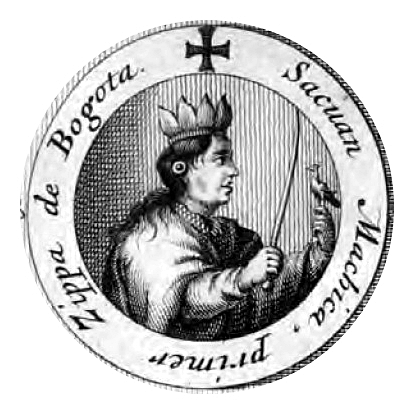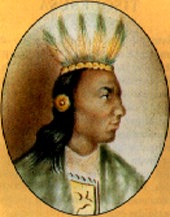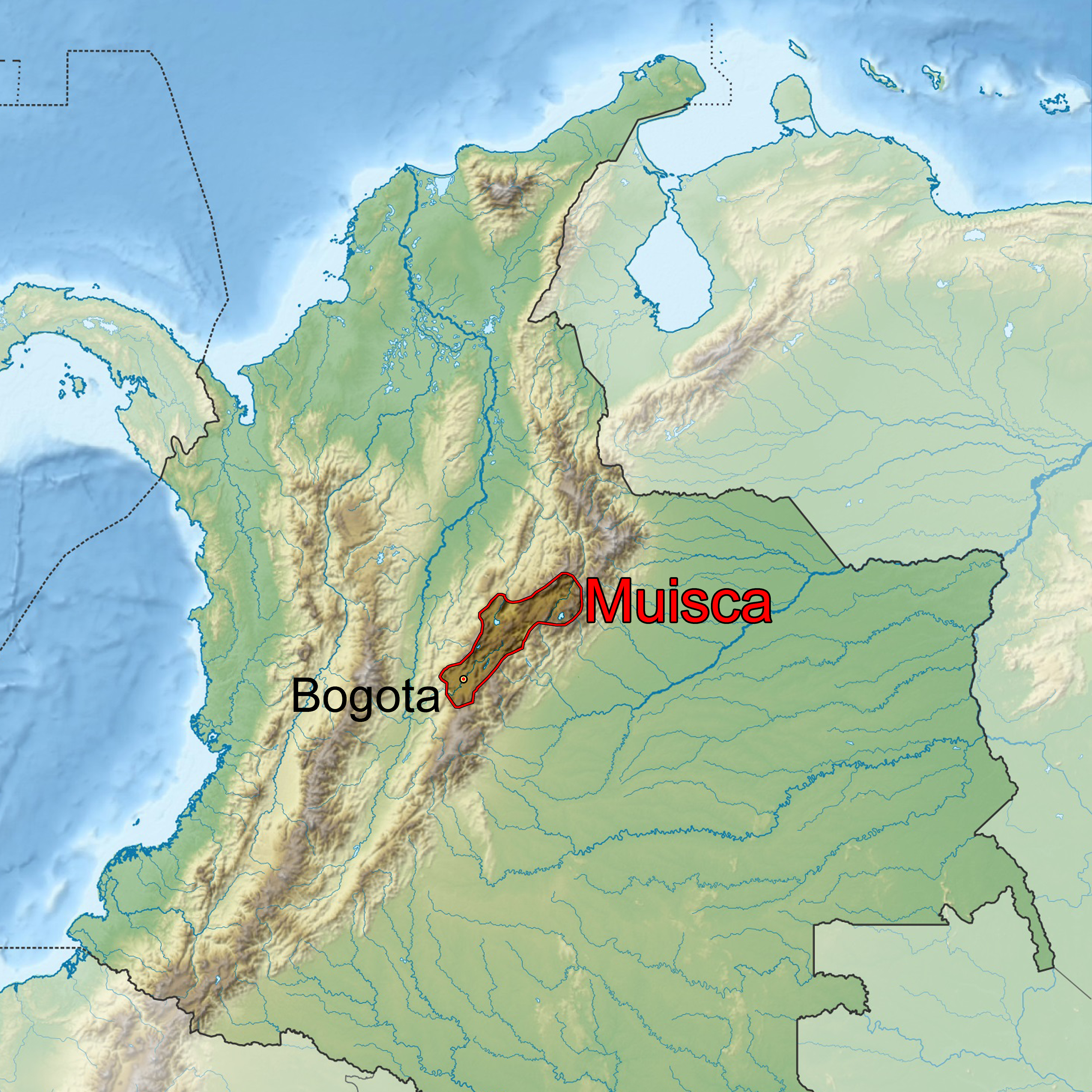|
Chocontá
Chocontá is a municipality and town of Colombia in the Almeidas Province, part of the department of Cundinamarca. It is located on the Pan-American Highway The Pan-American Highway (french: (Auto)route panaméricaine/transaméricaine; pt, Rodovia/Auto-estrada Pan-americana; es, Autopista/Carretera/Ruta Panamericana) is a network of roads stretching across the Americas and measuring about in .... In 1938 Chocontá had a population of 2,041. Etymology In the Chibcha language of the Muisca, Chocontá means: "Farmlands of the good ally" or "Garden of the neighbour".Official website Chocontá History Chocontá is located in the territories of the Muisca people, Muisca on the border between the area led by the ''cacique'' of Vélez, Santander, Vélez and the southern M ...[...More Info...] [...Related Items...] OR: [Wikipedia] [Google] [Baidu] |
Battle Of Chocontá
The Battle of Chocontá was one of a series of battles in the ongoing conflict between the northern and southern Muisca of pre-Columbian central Colombia. The battle was fought 1490 in the vicinity of Chocontá. An army of 50,000 southern Muisca guecha warriors, led by their ruler, or ''zipa'', Saguamanchica, attacked 60,000 northern Muisca troops commanded by Zaque Michuá, who was supported by the Cacique of Guatavita. Background In the decades before the Spanish conquistadors arrived in the central highlands of Colombia in 1537, the area was ruled by two main groups: the ''zacazgo'' of the northern Muisca and the ''zipazgo'' of the southern Muisca. While the two factions were joined in a confederation, they fought numerous wars to conquer terrain and to gain access to the resources of the area, mainly gold, copper, and emeralds. The northern Muisca inhabited the area of the current department of Boyacá while the southern Muisca lived in the present-day Cundinamarca ... [...More Info...] [...Related Items...] OR: [Wikipedia] [Google] [Baidu] |
Spanish Conquest Of The Muisca
The Spanish conquest of the Muisca took place from 1537 to 1540. The Muisca were the inhabitants of the central Andean highlands of Colombia before the arrival of the Spanish conquistadors. They were organised in a loose confederation of different rulers; the '' psihipqua'' of Muyquytá, with his headquarters in Funza, the ''hoa'' of Hunza, the '' iraca'' of the sacred City of the Sun Sugamuxi, the Tundama of Tundama, and several other independent ''caciques''. The most important rulers at the time of the conquest were ''psihipqua'' Tisquesusa, ''hoa'' Eucaneme, ''iraca'' Sugamuxi and Tundama in the northernmost portion of their territories. The Muisca were organised in small communities of circular enclosures (''ca'' in their language Muysccubbun; literally "language of the people"), with a central square where the '' bohío'' of the ''cacique'' was located. They were called "Salt People" because of their extraction of salt in various locations throughout their ter ... [...More Info...] [...Related Items...] OR: [Wikipedia] [Google] [Baidu] |
Saguamanchica
Saguamanchica (died Chocontá, 1490) was the second ruler (''zipa'') of Muyquytá, as of 1470. His ''zaque'' enemy ruling over the northern area of the Muisca territory was Michuá. Alternative spellings of his name are Sacuan Machica, Saguanmachica and Saguanmanchica. Biography As former ''cacique'' of Chía, Saguamanchica accessed the throne of the southern Muisca around 1470. His predecessor, the first ''zipa'' of Muyquytá Meicuchuca, left him a rich kingdom with many guecha warriors. This led Saguamanchica to seek expansion of his ''zipazgo''. The first campaign of warfare he planned was to submit the eternal enemies of the Muisca, the Panche and the Sutagao to the west of the Muisca territories. The Carib-speaking peoples formed an alliance against their common and far outnumbered enemy. Saguamanchica together with his vassal Pasca defeated his enemies led by general Uzatama with ease and annexed Fusagasugá and Tibacuy. The expansion policies of the southern M ... [...More Info...] [...Related Items...] OR: [Wikipedia] [Google] [Baidu] |
Michuá
Michuá or Michica (died Chocontá, 1490) was the second ''zaque'' of Hunza, currently known as Tunja, as of 1470. His contemporary enemy ''zipa'' of the southern Muisca was Saguamanchica. Biography Little is known about the history of Michuá, who accessed the throne of the northern Muisca in 1470. He broke the political peace established under his predecessor Hunzahúa and fought a 16-year war with the southern enemies led by Saguamanchica. The latter, supported by his vassal Pasca conquered Fusagasugá and Tibacuy. Saguamanchica attempted to submit the ''cacique'' of Guatavita who asked Michúa for assistance. Michuá sent a messenger to Bacatá to negotiate the ''zipa'' would listen to the complaints of the ''cacique''. Saguamanchica was not amused by undermining his authority and abused the messenger. When Michuá found out about the mistreatment of his messenger he sent an army of forty thousand guecha warriors to the ''zipa''. Realising the strength of the army Sagu ... [...More Info...] [...Related Items...] OR: [Wikipedia] [Google] [Baidu] |
Almeidas Province
Almeidas Province ( es, Provincia de Almeidas, ) is one of the 15 provinces in the Cundinamarca Department, Colombia. Almeidas borders to the east with the Boyacá Department to the north with the Ubaté Province, to the west with the Central Savanna Province and to the south with the Guavio Province. Subdivision Almeidas is subdivided into 7 municipalities A municipality is usually a single administrative division having corporate status and powers of self-government or jurisdiction as granted by national and regional laws to which it is subordinate. The term ''municipality'' may also mean the ...:Orden en las provincias de Cundinamarca - El Tiempo Refe ...
|
Zipa
When the Spanish arrived in the central Colombian highlands, the region was organized into the Muisca Confederation, which had two rulers; the ''zipa'' was the ruler of the southern part and based in Muyquytá. The ''hoa'' was the ruler of the northern area and based in Hunza, known today as Tunja. Organization ''Psihipqua'' and ''hoa'' were the titles given to these rulers of the ancient confederation. Neither exercised absolute power, not rigid or strict control over those to whom they owed their power, so that they can be considered kings. However, these positions of power were of great honor and were surrounded by a rather elaborate ceremony. The position of the ''psihipqua'' was such that not even the members of the nobility dared to look him in the face, and it is said if the ''psihipqua'' needed to spit, someone would hold out a piece of rich cloth for him to spit on, because it would be sacrilegious for anything so precious as his saliva to touch the ground. Whoever h ... [...More Info...] [...Related Items...] OR: [Wikipedia] [Google] [Baidu] |
Muisca People
The Muisca (also called Chibcha) are an indigenous peoples of Colombia, indigenous people and Pre-Columbian cultures of Colombia, culture of the Altiplano Cundiboyacense, Colombia, that formed the Muisca Confederation before the Spanish conquest of the Muisca, Spanish conquest. The people spoke Muysccubun, a language of the Chibchan languages, Chibchan language family, also called ''Muysca'' and ''Mosca''. They were encountered by list of conquistadors in Colombia, conquistadors dispatched by the Spanish Empire in 1537 at the time of the Spanish conquest of the Muisca, conquest. Subgroupings of the Muisca were mostly identified by their allegiances to three great rulers: the ''zaque, hoa'', centered in Tunja, Hunza, ruling a territory roughly covering modern southern and northeastern Boyacá Department, Boyacá and southern Santander Department, Santander; the ''zipa, psihipqua'', centered in Bacatá, Muyquytá and encompassing most of modern Cundinamarca Department, Cundinama ... [...More Info...] [...Related Items...] OR: [Wikipedia] [Google] [Baidu] |
Choconta Circulata
''Choconta circulata'' is a species of froghopper in the genus '' Choconta'', of the family of Cercopidae. The species has been named formerly ''Sphenorhina circulata'' (Lallemand), ''Tomaspis circulata'' ( Fennah), and originally ''Cercopis circulatus''.Gray, 1851, p.688''Choconta circulata'' - Hemiptera Database The species has been described first by French in 1844. Etymology and habitat T ...[...More Info...] [...Related Items...] OR: [Wikipedia] [Google] [Baidu] |
Choconta (genus)
''Choconta'' is a genus of froghoppers in the family of ''Cercopidae''. The genus was described first by Fennah in 1979.''Choconta'' - Hemiptera Database Etymology and habitat The genus is named after the town of , Cundinamarca, on the , . Its ...[...More Info...] [...Related Items...] OR: [Wikipedia] [Google] [Baidu] |
Tomás De Herrera
Tomás José Ramón del Carmen de Herrera y Pérez Dávila (21 December 1804 – 5 December 1854) was a Neogranadine statesman and general who in 1840 became Head of State of the Free State of the Isthmus, a short lived independent state which is located in what is now Panama. Tomás de Herrera also became President of the Republic of the New Granada in 1854 during the rebellion against the incumbent president José María Melo. Herrera was born on December 21, 1804. He entered military service in 1822 and became a lieutenant. He participated in the battles of Junín and Ayacucho against the royalists in Peru. In 1828 he was charged with conspiracy, and jailed in Bogota. Herrera escaped, was recaptured and sentenced to death, but his sentence was commuted to banishment. Upon completion of sentence, he returned to Panama in 1830 and participated in the fight against Colonel Juan Eligio Alzuru. When Alzuru was shot, Herrera was appointed Colonel Commandant General of the I ... [...More Info...] [...Related Items...] OR: [Wikipedia] [Google] [Baidu] |
Municipalities Of Colombia
The Municipalities of Colombia are decentralized subdivisions of the Republic of Colombia. Municipalities make up most of the departments of Colombia with 1,122 municipalities ('' municipios''). Each one of them is led by a mayor (''alcalde'') elected by popular vote and represents the maximum executive government official at a municipality level under the mandate of the governor of their department which is a representative of all municipalities in the department; municipalities are grouped to form departments. The municipalities of Colombia are also grouped in an association called the ''Federación Colombiana de Municipios'' (Colombian Federation of Municipalities), which functions as a union under the private law and under the constitutional right to free association to defend their common interests. Categories Conforming to the law 1551/12 that modified the sixth article of the law 136/94 Article 7 http://www.alcaldiabogota.gov.co/sisjur/normas/Norma1.jsp?i=48267 the mu ... [...More Info...] [...Related Items...] OR: [Wikipedia] [Google] [Baidu] |



